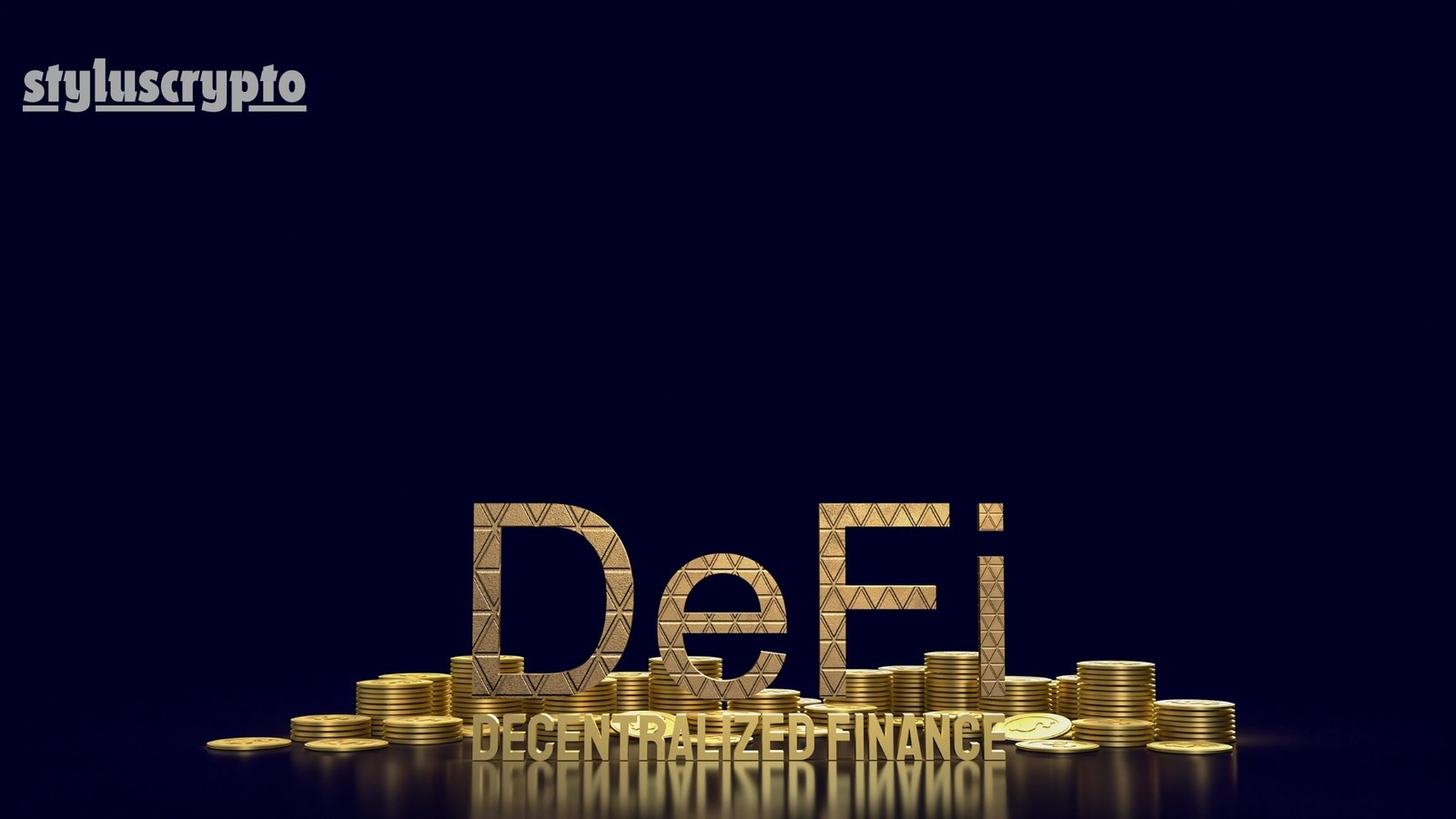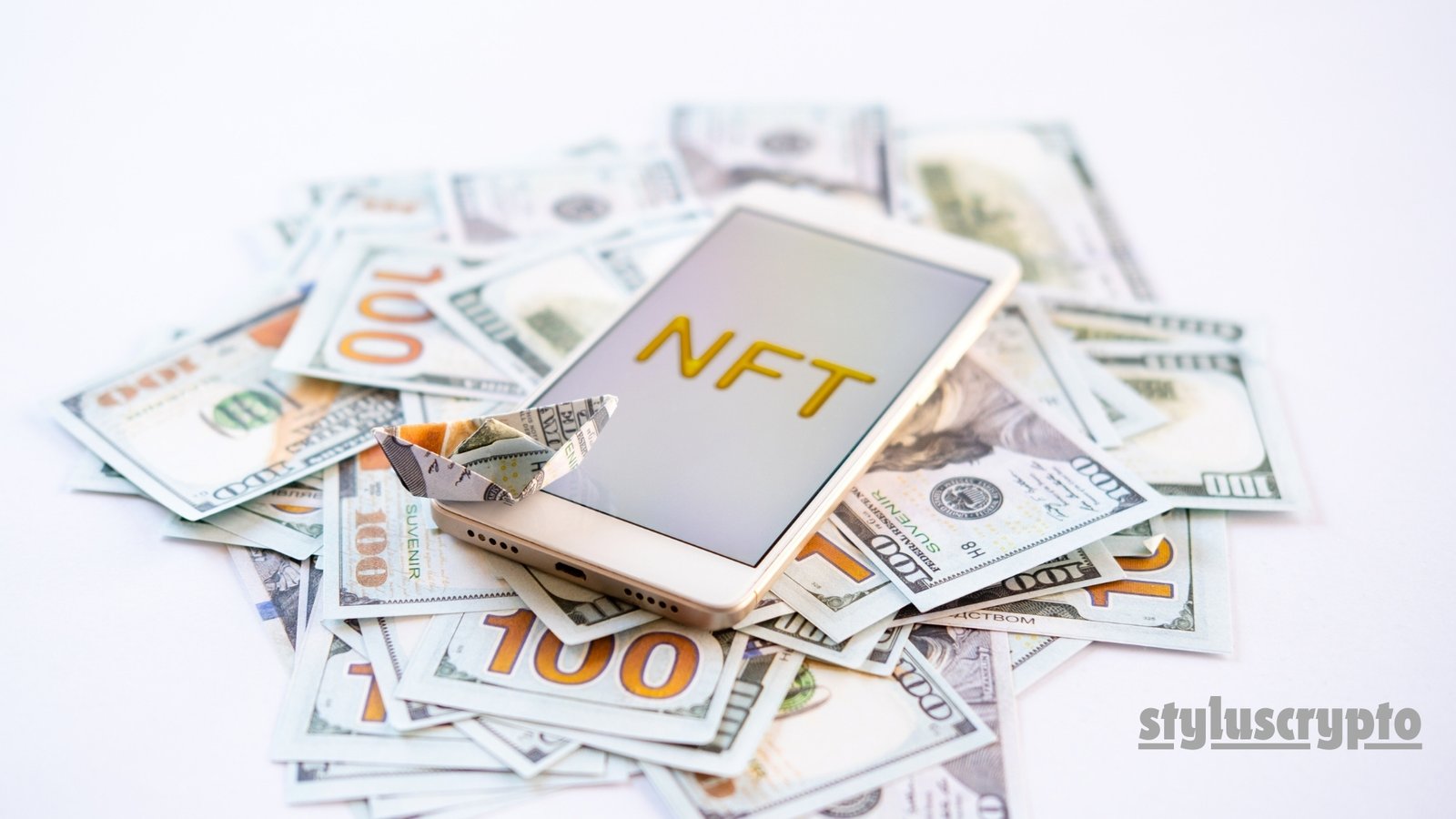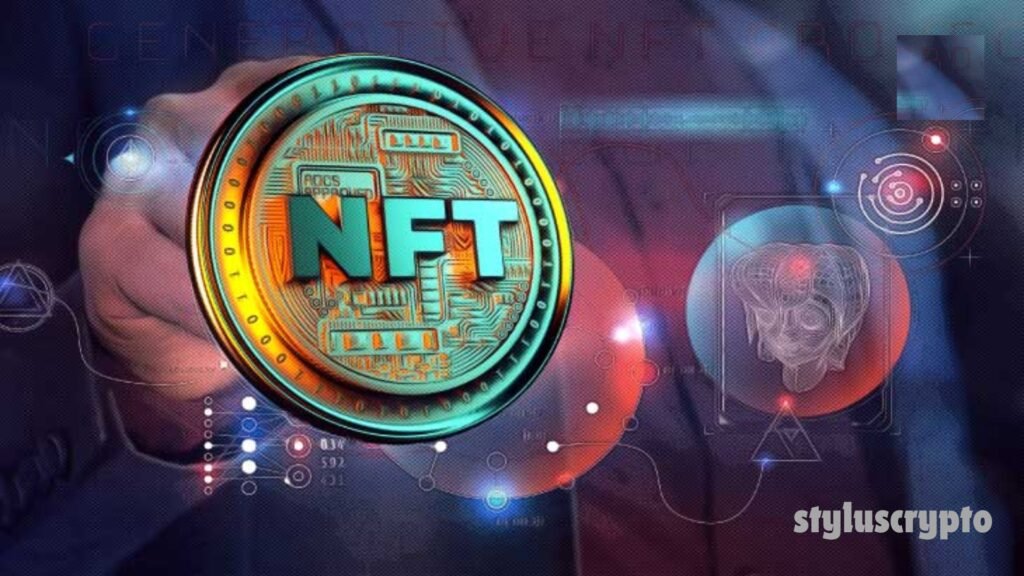DeFi Sector Modified: The management of cryptocurrency transactions is now within the purview of Decentralized Finance (DeFi), with TVL (total value locked) reaching as high as $210 billion. DeFi is an excellent substitute for traditional centralized systems since it eliminates intermediaries, making transactions transparent and safe. Traditional centralized systems are vulnerable to fraudulent conduct. NFTs, which saw a boom in 2021, have also significantly contributed to various industries, including real estate, gaming, and the arts. The market value of NFT is projected to reach $20 billion by February 2022.
Non-fungible tokens are aggressively entering the DeFi space, delivering fresh ideas and concepts and new insights into improving the efficiency of established procedures.
Overview of DeFi

DeFi is a finance management system built on the blockchain. Decentralized finance eliminates the need for any third parties by enabling the quick and safe execution of financial operations on a peer-to-peer (P2P) basis, including payments, lending, borrowing, saving, margin trading, yield aggregation, and currency trading (e.g., banks or other financial institutions).
Decentralized applications (dApps)—the bulk of Ethereum-based—allow DeFi services to function. Leaders in the blockchain space and investors are particularly interested in decentralized finance, and both are well aware of the substantial prospects presented by the technology:
What are the benefits of DeFi?
Defi can boast several tangible advantages:
- No centralized authority means no one can tamper with the data or suddenly change the rules.
- Transparency and immutability – all information concerning transactions is kept on the ledger and is open to everyone, yet no changes can be made.
- Accessibility – DeFi applications are cross-platform and have no territorial limits, meaning anyone with a stable internet connection can perform DeFi operations.
- No need for permission – fast access to a full range of financial services and transactions is made possible without waiting for requests to be verified.
- Interoperability—DeFi solutions are highly flexible and can be tailored precisely to users’ needs. Besides, building dApps on existing protocols and attaching third-party applications is possible.
In this video, Daria Khritonenkova, a blockchain consultant, dives even deeper into the DeFi phenomenon. She talks about all the pros and cons of this concept, explains how CeFi and DeFi differ, and introduces notable DeFi use cases.
A quick look at NFTs
Returning to NFTs, let’s. Non-fungible tokens, or NFTs, are objects documented on a blockchain as distinct digital assets. A non-fungible token (NFT) can be anything from pictures and movies to tickets and real estate. In contrast to fungible tokens like Bitcoin, NFTs are unique and have unique properties. The art world was quite upset about NFTs since they allowed artists to profit from their creations without depending on intermediaries like galleries or auction houses.
The benefits of adding non-fungible tokens to the gaming experience have also been well-received by players. These include the ability to lawfully exchange in-game items and participate in P2E (play to earn) activities, the primary objective of which is to make money.
What are the benefits of NFTs?

The key features making NFT such a sought-after technology are:
- Proof of ownership – the information about the author is permanently stored on the token’s metadata, and no matter how many hands an NFT passes through, the creator saves all authorship rights and receives royalties in total sum.
- Uniqueness – as implied in its name, a non-fungible token is a one-off, with no duplicates possible.
- Transparency – NFTs’ metadata is open to anyone, so it is easy to check on the authenticity of the token you are interested in as well as view its previous owners and price history
- investment potential – NFTs tend to become very expensive overnight suddenly, so there is a chance of you buying a token very cheaply to find out later that its price has more than doubled.
How can NFTs benefit DeFi?
NFTs can significantly impact various conventional processes, but what benefits might they provide the finance industry? Conventional centralized finance has always been supervised by regulatory bodies that vet investments, trade agreements, and transactions to ensure they are reliable and responsible. However, this strategy also has drawbacks. Verification and approval procedures might be drawn out, which can cause delays and material costs. Not to mention that when there are too many participants, there is a higher risk of fraud or error.
Decentralized finance, on the other hand, provides an efficient and transparent method of managing finances without sacrificing security or privacy. NFT is becoming widely used in DeFi initiatives due to its capacity to hold value and act as an unchangeable proof of ownership. DeFi, on the other hand, assists in releasing this value and carrying out various tasks using tokenized assets. These two technologies are advantageous to each other and create new opportunities in the financial sector. As mentioned earlier, we encourage you to view the video in which we go over the function of NFTs in the DeFi market and how decentralized finance can use them. We also touch on some well-known DeFi projects that make use of NFTs.
The most prominent use cases of NFTs in DeFi
Adopting NFTs can significantly benefit several DeFi aspects, including loan collateralization, fractional ownership, insurance, and debt management.
Loan collateralization
In the traditional system, the bank determines the collateralization amount, but what about letting the lenders decide? This is precisely how it happens with DeFi.
With NFTs, obtaining collateralized loans is easier because the borrower can reduce the lender’s risk by presenting a token if the loan is not repaid. To make an informed choice, the lender can look at the NFT’s current price, trends in the secondary market, and demand for that specific asset. As a result, NFT lending has emerged as the most well-liked area of decentralized finance, with TVL expected to reach $49 billion by 2021.
NFT owners can request loans on several platforms, including Arcade, Genesis, NFTfi, PawnFi, and TrustNFT. Let’s examine Arcade in more detail. The Ethereum-based platform facilitates peer-to-peer lending and borrowing. Arcade uses the Pawn protocol, which blends NFTs with decentralized finance.
Fractional ownership
Due to their high cost, specific non-fungible tokens might have to wait long to attract a possible buyer. However, many buyers can split the price if the token is fractionalized, increasing the asset’s liquidity. Liquidityance, splitting g NFTs, and creating fractions that comply with ERC20 is possible via the Fractional platform. In addition to liquidity-boosting liquidity, Liquidityform enables consumers to own fractional shares of collectibles they would not have otherwise been able to.
One project that combines NFT with DeFi for efficient insurance management is CoverCompared. The solution aims to reduce insurance policy prices, transaction, and administrative expenses. CoverCompared offers a native marketplace where various cryptocurrencies can be used to purchase all its items.
Debt management
Debt management is another area of finance that can benefit significantly from implementing NFT DeFi. The more employees a firm requires to manage its finances, especially debt concerns, the larger it is. Using smart contracts dramatically reduces time spent and eliminates human mistakes regarding repetitive tasks like approvals and different computations. Furthermore, as decentralized finance operates on the blockchain, all information is kept up-to-date and accessible at all times.
Additionally, you won’t have to worry about the borrower’s inability to repay you if the loan they owe you is secured by an NFT. There is no need for a judicial case when this occurs because you automatically receive the NFT. Have you heard about GameFi?
Top DeFi projects leveraging NFTs
Many developers are seizing the chance to fully realize the potential of the NFT DeFi combo because of its wide range of possible applications: Uniswap3, Solv Protocol, Charged Particles, NFTfi, Burnt Finance, WiVX, Pods, and Just Liquidity, to mention a few.
Let’s take a closer look at these solutions:
Uniswap3
A DeFi protocol called Uniswap is used for automated liquidity provisioning and cryptocurrency exchange. Uniswap3 created non-fungible liquidity pools in response to the problem of impermanent loss, which is prevalent in the Curve protocol. This opened up a whole new use for NFTs.
Liquidity providers can now allocate their resources within a specified price range rather than having to disperse all values throughout the pool. This lowers the downside risks while increasing the exposure of liquidity providers to desirable assets.
Solv Protocol
A DeFi platform called Solv Protocol enables the minting and trading of particular financial non-fungible tokens known as Solv Vouchers. These vouchers are a type of derivative that stands in for tokens or vesting assets. As of this writing, they have a total value of $69 million locked in. Periodically, the assets are freed after being locked up. A framework like this guarantees long-term support from team members and investors and bolsters the project’s expansion and success.
The only thing left to do with locked assets is to wait for the vesting term to expire to claim the assets, which are typically illiquid. Owners of locked assets can now take an active role in managing their assets by dividing, buying, and selling Solv Vouchers into larger entities.
Charged Particles
Using the Charged Particles protocol, NFTs may accept token deposits, including ERC-20 and ERC-721. This turns non-fungible tokens into a virtual basket that holds different digital assets.
You will create assets that provide returns; for instance, if you put Aave tokens into an NFT, the protocol converts them to tokens. Since the interest is programmed, you are in complete control and can transfer it to any wallet. These tokens can also be utilized for charity art sales, NFT-based savings accounts, entertainment NFTs, and virtual geocaching.
NFTfi
NFTfi is a liquidity protocol for non-fungible tokens. The solution enables NFT lending and borrowing on a peer-to-peer and utterly trustless basis. NFT liquidity providers use NFTfi to earn attractive yields or – in the case of loan defaults – to obtain valuable NFTs. NFTfi runs on the Ethereum blockchain only but will soon be available on Flow.
Burnt Finance
On the Solana blockchain, Burnt Finance is a decentralized NFT auction system. The platform enables the creation of exclusive NFT collections and hosts fundraising campaigns and auctions of digital assets.
Burnt Finance can provide low transaction costs of $0.01 and fast processing speeds (400 milliseconds). The project will develop and expand an NFT marketplace with full DeFi functionality—including fractionalization, lending, liquidity mining with staking incentives, and GameFi.
WiVX
A decentralized reserve token protocol called WiVX was unveiled as an expansion of WiV Technologies’ blockchain-powered wine investing platform. Each WiV token represents a case of wine. When you possess a token, actual wine becomes your possession. The owner keeps every wine case safely in a licensed warehouse or participates in WiVX’s merchant network. The owner will receive the wine upon request.
Pods
In the NFT DeFi realm, Pods is a decentralized non-custodial options system that offers a simple way to hedge cryptocurrencies. In October 2021, Pods introduced its NFT reward scheme and became a part of the Galaxy ecosystem. The program states that prizes will be given to the early adopters and the community’s most active members.
Three NFT groups made up The Awakening, the inaugural season of the rewards program. Holders of Pods NFT will eventually get access to early testing and research groups, vote on proposals for community governance, and assume specific roles.
Just Liquidity
Just Liquidity’s system aims to deliver an utterly decentralized experience with global fiat applications like Mastercard, Debit Card, and Visa. The sysLiquidity provides an NFT staking model for a predetermined amount of time. The user can stake their tokens in one pool; upon receiving an NFT, they can access the next pool. The NFT expires when the user enters the new pool, acting as an admission ticket.
Based on the access granted, JustLiquidity’s NFT staking concept establishes a secondary market for these NFTs. Learn about Echo DeFi, a cutting-edge equitable token distribution and liquidity provision method.
Final Thought
While still in its infancy, non-fungible token technology is already significantly impacting the DeFi industry and permeating the fundamental foundation of its operations. After merging, NFT and DeFi appear to have significantly changed the game in every area related to financial management, and we eagerly await the continued advancement of these innovative products.
Do you have a game-changing concept but are unsure how to execute it properly? Our development team comprises the best professionals in the business, flawlessly completing even the most complex and challenging projects. Whether it’s traditional software development or NFT and blockchain, put your hesitations aside and contact us for a thorough consultation.

